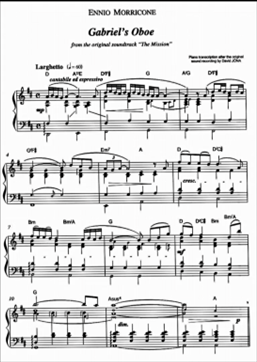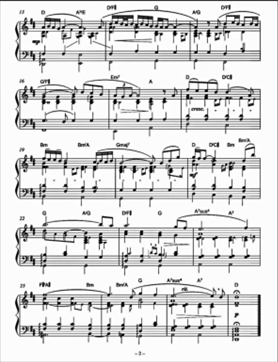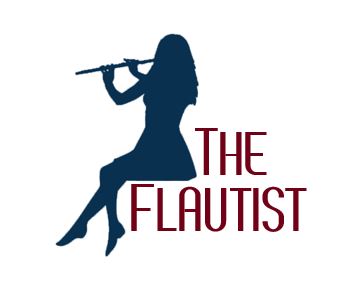Gabriel’s Oboe
by Ennio Morricone
Eileen Gilligan Flute – Gabriel’s Oboe
Ennio Moriccone was born in Rome, Italy on November 10, 1928. His father was a jazz trumpet player, and he gave the young Moriccone his first lessons in music. At the age of twelve, Ennio joined the Saint Cecilia Conservatory to study harmony, where he completed a four year program in two years. Moriccone continued studying at the conservatory till 1952, obtaining diplomas in Composition and Band Arrangement, among many others.
Upon graduation, Moriccone first wrote film scores as a ghost writer for other composers. In 1959 he conducted and co-wrote the score for Mario Nascimbene’s “Morte Di Un Amico”. His first credited score was for Luciano Salce’s 1961 movie “II Federale”.
In 1963 Moriccone wrote his first score for a western movie titled “Gunfight at Red Sands”. He then re-united with his schoolmate Sergio Leone, who was an aspiring director at the time. With Leone, he wrote the soundtrack for the ridiculously famous “Dollars Trilogy”. This soundtrack was one of Moriccone’s most famous; it included the beautiful composition “The Ecstasy of Gold”, which went on to become Moriccone’s most famous tune. Moriccone followed his marvelous success with soundtracks for “Once Upon a Time in the West” and “A Fistful of Dynamite”. He also wrote scores for director Sergio Corbucci’s western films including “Navajo Joe”, “The Hellbenders” and “The Great Silence”.
When the Dollar’s Trilogy premiered in the United States in 1967, Moriccone’s career expanded to Hollywood. There, he composed film scores for Academy Award winning films, including “The Untouchables”, “Days of Heaven”, “The Mission”, “Bugsy”, and “Cinema Paradiso”. Directors for whom Moriccone wrote music included John Carpenter, Barry Levinson, Mike Nichols and Brian De Palma. Moriccone also composed music for many popular television series, including “Moses the Lawgiver”, “The Secret of the Sahara”, “Marco Polo”, and “La Piovra”.
Ennio Morricone legendary skills in composing and orchestrating led him to conduct some of the leading orchestras of the world. As of 2001, he has conducted over two hundred concerts, including concerts for the London Philharmonic Orchestra, the New York Philharmonic, and mostly for the Orchestra Roma Sinfonietta. Among his fifty six awards, he won an Honorary Academy Award in 2007 for “his magnificent and multifaceted contributions to the art of film music”. He is also the winner of three Grammy Awards and two Golden Globes.
Cinema Paradiso
is probably the most renowned of his recent scores. Ennio conducting in Venice
The Mission soundtrack
The scene where Gabriels oboe is played on the movie and really captures the essence of the piece.
Gabriels Oboe conducted by Ennio Morricone
I have chosen Gabriels Oboe because it is a haunting , beautiful melody that is a great way to practise finding the speaking point of the flute and carry the resonant tone throughout. The melody keeps within a close range note wise so is perfect for this as a practise extension exercise to low note pich bend exercise.



Recent Comments